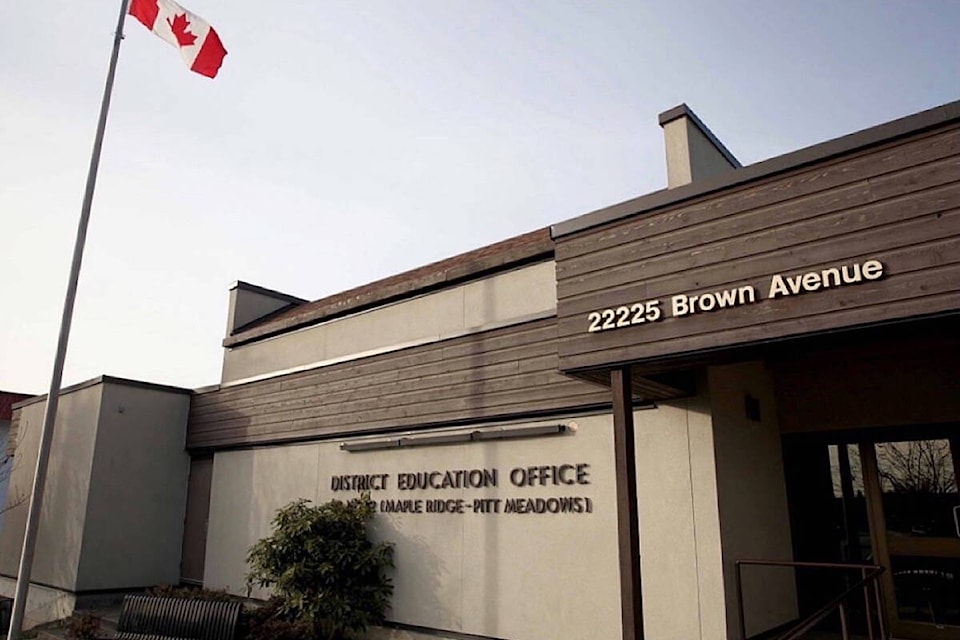Arley Midgley’s daughter had a mishap in the school playground over the lunch break.
“She just fell at school and got gravel in her hand,” explained the Maple Ridge mother, adding that it was a simple incident.
The noon-hour supervisor instructed her daughter to go wash her hand before the supervisor covered the cut with an adhesive bandage.
However, gravel was still stuck in the skin, and by the time Midgley picked her up from daycare after work, it was already red and oozing puss.
She cleaned it up and luckily her daughter did not require antibiotics. She informed the school – just to let them know the incident had occurred and that, in her opinion, it was not properly handled – and was informed that noon-hour supervisors are not first aid trained. When they recognize first aid may be required, parents are notified so they can pick up their children and seek medical attention themselves.
A first aid attendant would have cleaned out the cut properly and used an alcohol swab before putting an adhesive bandage on, said Midgley, who is certified in first aid, and works with a local Scouts group.
When Midgley is tasked with about 30 Scouts in her care for an hour, she is required to have two first aid attendants on hand. And if large events are planned with the Scouts, there are rules about having a specialized medical team on hand at a first aid tent or room, she said.
In comparison, she said, staff at schools are in charge of hundreds of students at a time, five days a week, for six hours each day.
SD42 replied the requirement to have a first aid attendant on site for staff is mandated by WorkSafeBC and in compliance with this requirement, the school district has a first aid attendant at every school.
“WorkSafeBC addresses workplace issues exclusively and therefore understandably does not address the question of first aid attendants for students,” explained district spokesperson Irena Pochop, after consulting with the health and safety manager for the district, as well as other staff.
Furthermore, she described the standard of care required of staff in relation to students in their care as that of a “prudent parent”.
All school staff have a duty of care to assist a student, she explained, including the first aid attendant on site. However, if an injury is of a more serious nature, the response for staff and students is exactly the same: 911 is called.
RELATED: Funding shortfalls expected in SD42 for next four years
“If the injury is minor, such a scratch or skinned knee, any of our staff can administer first aid. If the injury were more significant, staff with first aid training would be called,” noted Pochop, adding that there are at least two or more first aid attendants at every site in the school district.
Staff are able to sign up for training on professional development days, with the cost covered by the district.
CPR/AED (defibrillator) Level C training, which does apply to children, is offered to any teacher or staff member who is interested in taking the course, added Pochop on behalf of the school district. While the district does not track the exact number of people who have taken the course, a “significant number” of School District 42 employees have received the training, said Pochop.
“We also designate certain education assistants working with children with specific needs to receive additional first aid training,” she continued, saying that is also important to note many of the treatments and responses involved in the Occupational First Aid Level I and Occupational First Aid Level II do apply to both adults and children.
RELATED: St. John Ambulance aims to install 1,000 publicly accessible AEDs across B.C.
When it comes to first aid an adult is considered anyone over the age of eight, explained Christopher Chan, learning and development officer with St. John Ambulance, an organization that teaches first aid to people across the country. But, a child under eight who is bigger in size can also be considered an adult.
The age difference, said Chan, only applies when a person is dealing with resuscitation like CPR, choking, and using an AED. Even then, he said, for CPR and for someone who is choking, the difference between a child and an adult is very minute.
“You are just adjusting for size and the amount of strength when you are doing your CPR compressions,” he said.
Although occupational first aid does apply to adults and does not address children like standard first aid does, Chan said, it would cover the majority of children in elementary school.
And when it comes to broken bones or bleeding, first aid treatments are the same no matter what age the person is.
“Standard first aid, is basically occupational first aid but with the addition of how to change for children,” stated Midgley, adding that it would make sense for office staff at schools to have standard first aid because that’s where children usually end up when they are hurt.
Have a story tip? Email: cflanagan@mapleridgenews.com
Like us on Facebook and follow us on Twitter.
